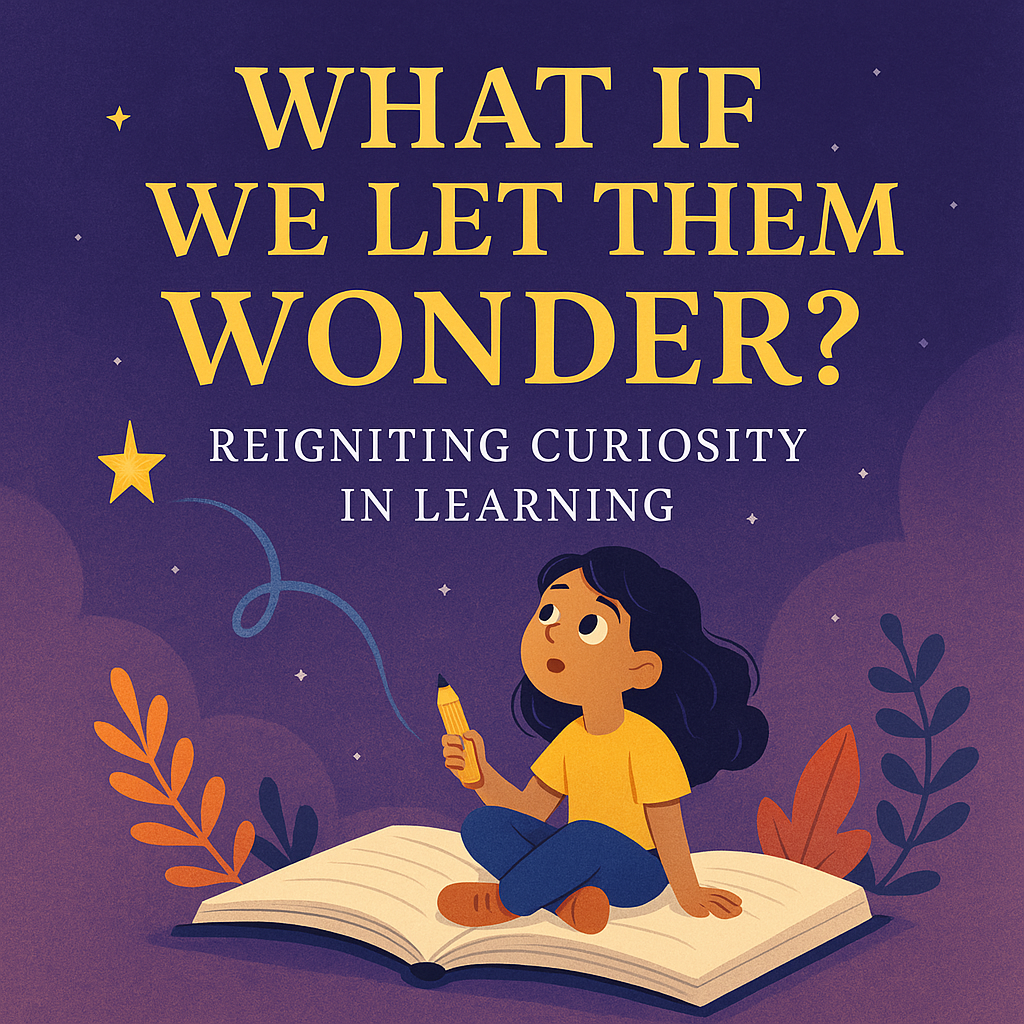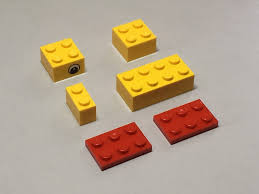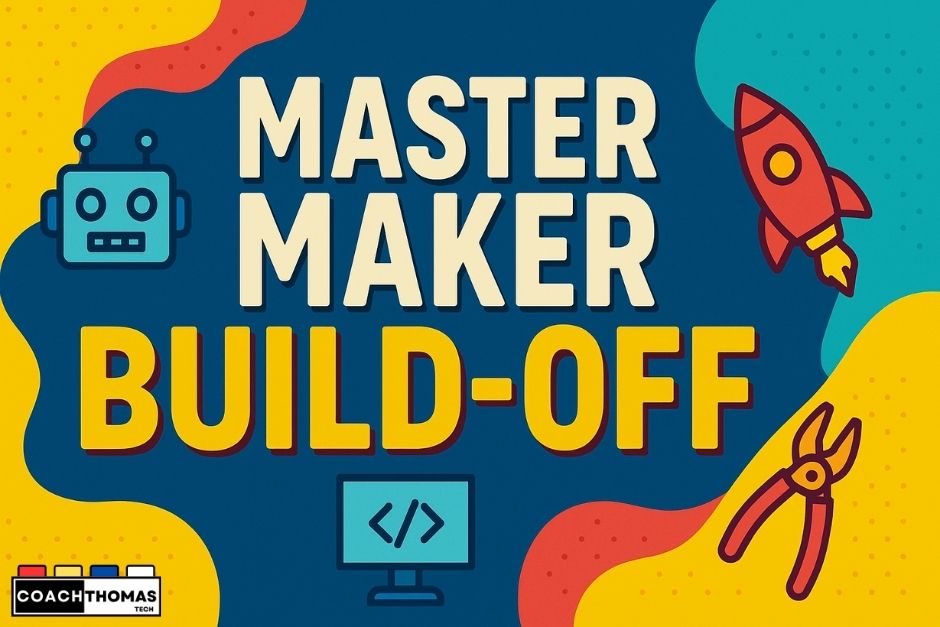In my 30+ years in the STEM classroom, I’ve seen it over and over again: when a student is given the time and space to ask, “What if…?” or “How does that work?”—something shifts. They become engaged, involved, and all-in. Suddenly, a project takes on a life of its own. They go well beyond expectations and so-called desired outcomes. They lead their own learning. That’s when the magic happens.
Last week, I wrote about the power of getting students to build—giving them something to do, something to create. But what gets them building in the first place? It’s not just because it’s assigned. The real answer is curiosity—and I believe it’s one of the most underused tools in education today, especially in middle and high school classrooms.
I always tell my students not to over-engineer a project. They do anyway. Take my high school robotics class: the simple task was to build a bot that could detect the edge of a table and not fall off. The assignment quickly turned into a full-blown competition—with minifigure drivers, rack-and-pinion steering systems, and custom chassis designs. None of that was part of the rubric. But through their curiosity, they didn’t just complete the project—they owned it. And in the process, they learned even more.
“When students lead with curiosity, learning becomes theirs.”
What Is Curiosity, and Why Does It Matter?
You don’t have to be an expert to recognize what curiosity looks like. Simply put, it’s the desire to learn and explore. It’s about being interested, asking questions, and wanting to find out more.
Curiosity fuels the kind of growth mindset we want for ourselves and our students. It drives people to try new things, ask better questions, and look for new solutions. And that’s exactly what we need in our classrooms.
Here’s why curiosity matters in learning—and life:
- Enhances Learning: Curiosity activates the brain’s reward system, making it easier to absorb and retain new information. Research from the George Lucas Educational Foundation shows students remember not only the content they were curious about but related material as well.
- Promotes Engagement: Curious students naturally explore beyond the lesson. They engage in discussions, conduct their own research, and become more connected to the content.
- Builds Critical Thinking: When students are curious, they ask deeper questions. They push past surface-level answers and start analyzing how and why things work.
- Encourages Lifelong Learning: Curiosity keeps students asking “why?” long after the bell rings. It builds a love of learning that lasts beyond the classroom.
- Sparks Creativity: Exploring new ideas leads to innovative thinking. Students aren’t afraid to try something new or challenge the norm.
- Improves Academic Performance: When students are curious, they’re invested. And when they’re invested, they perform better.
- Strengthens Social Skills: Curious students are more likely to engage in conversation, listen actively, and collaborate effectively.
When students are curious, they don’t even notice how hard they’re working.
Curiosity in Action: What It Looks Like
As we talked about last week, hands-on projects are where curiosity naturally thrives. If you want to see curiosity in motion, head to a STEM lab, woodshop, art room—or even the athletic field. You’ll see students wondering, trying, testing, and iterating.
The best way to invite curiosity is through open-ended projects—ones with multiple paths to success. Instead of giving step-by-step instructions, provide success criteria. Let students figure out how to get there on their own. That’s when it becomes their project.
Here are some examples of what curiosity looks like across core subjects:
🔤 ELA – The Mysterious First Line
Activity: Show only the first sentence of a novel or short story.
Prompt: “What do you think happens next? What kind of world or character are we stepping into?”
Students begin predicting, wondering, and mentally building the narrative—before they even read. Curiosity pulls them into the story.
🔬 Science – The Unlabeled Experiment
Activity: Set up a demo (like baking soda and vinegar inflating a balloon) with no explanation.
Prompt: “What’s happening here? How would you explain this to a second grader?”
heir questions drive the lesson. Instead of passively receiving content, they
actively construct it.
➕ Math – The Broken Pattern
Activity: Show a pattern that breaks suddenly.
Example: 2, 4, 8, 16, 32, 65…
Prompt: “What’s wrong here? Why?”
Students become investigators, not just solvers. Their curiosity fuels problem-solving.
🌍 Social Studies – The Artifact Mystery Box
Activity: Present an unfamiliar artifact or photo without context.
Prompt: “Who used this? What was it for? What does it tell us about the past?”
They form hypotheses and use historical thinking to uncover meaning.
Barriers to Curiosity in Schools
Like most things in education, curiosity often gets sidelined by the usual suspects: lack of time, mandated testing, pacing guides. These challenges are real, but they’re not the only culprits.
Another barrier? Classroom setup. Traditional rooms are often designed for control, not curiosity. Rows of desks, teacher at the front—it’s the “sit and get” model that prioritizes silence over exploration. While there’s a time and place for direct instruction, it shouldn’t be the default.
Some schools have embraced flexible seating and open layouts, which helps. But as my dad used to say: “You can’t put lipstick on a pig.” Changing the space only matters if we also change the approach.
The hardest barrier to overcome, though, might be fear. Fear that students will get off-task. Fear of losing control. Fear of letting go. But when we hold too tightly to control, we hold students back. We have to let go a little—and trust the process.
We don’t need more time. What we need is more trust—in our students and in the power of curiosity.
Reigniting Curiosity
So how do we bring curiosity back into the classroom? You don’t need to rewrite your curriculum. You just need to take the first step.
Start small. Ask simple questions like:
- “What do you notice?”
- “What do you wonder about?”
- “Here’s the answer—what might the question be?”
These questions send a powerful message: there’s more here to discover.
And of course—make it hands-on. I love starting class with a quick LEGO build. It takes just a few minutes, but it sends the signal that this is a place for exploration. Grab a few random pieces and have students build something connected to the topic—or not! Either way, they’re thinking, tinkering, and wondering.
You probably already have a lesson you’ve taught for years because it just works. Keep it. But consider how you can widen it, deepen it, or let students approach it from a different angle. Give them a little choice, a little room, and watch what happens.
And when they hit a dead end? That’s still learning. That’s part of the process. You’ve hit dead ends too. The difference is—you had the chance to try again.
You don’t need a new curriculum. You need a mindset shift—from covering to discovering.
Conclusion & Call to Action
Curiosity isn’t a luxury—it’s a necessity. It turns lessons into adventures. It transforms students from passive participants into passionate learners. And best of all, it’s already inside every student—we just have to make room for it.
This week, try one small change.
- Ask a question you don’t immediately answer.
- Let students build something without full instructions.
- Give them space to be curious—and see where it takes them.
Let’s bring curiosity back—one question, one build, and one spark at a time.
And if you try something from this post, let me know how it goes! Use the hashtag #WheresTheFunInThat and join the conversation.
Disclaimer This content was originally written by the author. AI was used solely for editing, formatting, and refining the structure to enhance clarity, readability, and flow. No AI-generated content was used in the creation of ideas or original writing.



